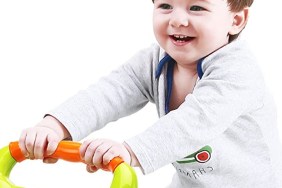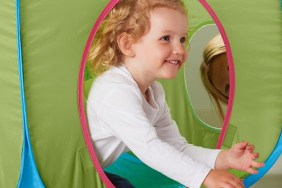First steps are an exciting milestone. First steps also generate a lot of questions among parents. Sometime before the end of the first year, you will likely find yourself answering the question, “Is she walking yet?” over and over again.
So when do babies start walking? Like most developmental milestones, babies learn to walk their own timelines. You can expect your baby to take her first steps anywhere between 9 and 15 months, though premature babies may need extra time.
Walking is the natural next step after babies spend time crawling and pulling up. Once they get a new view of their worlds, they want to keep moving forward. It helps to understand the stages of muscle development and new skill development babies work through as they grow from newborns to toddlers on the move.
Stages of movement for learning to walk:
No matter the exact timeline, babies follow the same sequence of stages to get from newborn swaddled in the bassinet to toddler on the run.
- Sitting: Around 6 months (sometimes later), babies figure out how to use their muscles to sit up. This is a lengthy process. It begins with holding their heads up and is likely to include some tumbling when they first learn to sit up without assistance.
- Crawling: Somewhere between 6 and 10 months, most babies begin crawling to get from here to there. There are all kinds of versions of crawling, and some skip this stage altogether and move right to pulling up and cruising. Crawling requires both arm and leg strength, and helps babies prepare their legs for standing.
- Pulling up: At around 10 months, many babies begin pulling themselves to a standing position. This can occur earlier or later.
- Cruising: Once your baby can pull herself up top standing, using furniture, walls, and people to cruise around the room is the next step.
- Walking: The last step is figuring out how to balance on one foot while pushing off with the other. This takes a lot of muscle coordination and will likely result in some falls. Try not to swoop in before your little one stumbles each time, as she has to learn how to find that balance. New walkers tend to have a wide stance and keep their arms stretched out for balance. Once they get the hang of it, however, they’ll be off and running.
How can parents help babies learn to walk?
Try not to worry too much if you feel like your child is the only one in the tot lot who refuses to walk. Many toddlers are content to crawl for quite some time, and some alternate between walking and crawling for a while before committing to moving in an upright position. Walking closer to 15 months isn’t a sign of laziness or lack of athletic ability. Bigger babies can be later walkers, as they need to build extra leg strength. And early walking is often a function of either personality (determination) or having an older sibling to chase.
Push toys, activity centers, and jumpers won’t inspire your baby to walk any earlier. They can be fun and many babies enjoy them, but they won’t help your baby meet this milestone at an accelerated pace. Walkers can actually be a danger, as babies get into trouble quickly, so it’s best to avoid those.
What if my toddler won’t walk?
If a child is 16 months and isn’t cruising or walking at all, check in with your pediatrician. Recurrent illnesses, like ear infections, can actually hinder your baby’s ability to learn to walk as fluid in the ears can affect balance.
Does my toddler need shoes?
Barefoot is best for new walkers! Babies learn to walk better when their feet make direct contact with the floor. This helps them gauge how to balance on one foot while pushing off with the other. You’ll want some shoes when they are out in the world, particularly when walking on pavement, so look for a pair with flexible soles.
Photo: Getty








